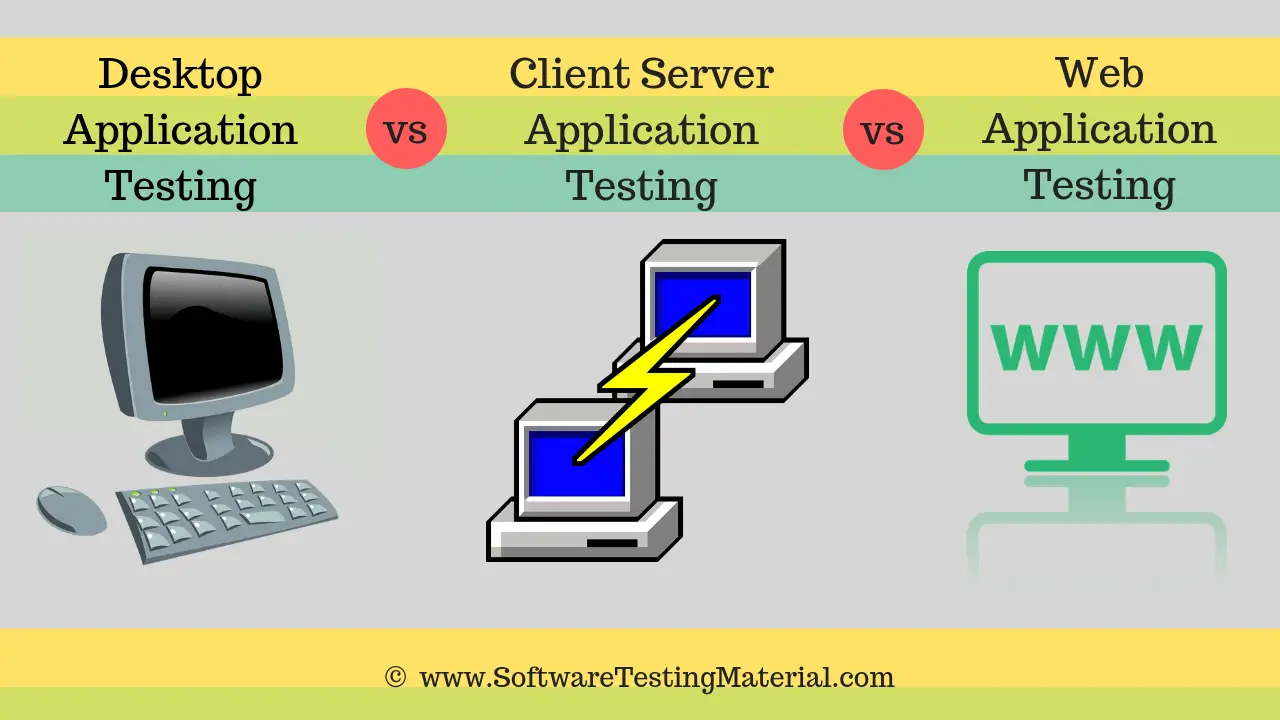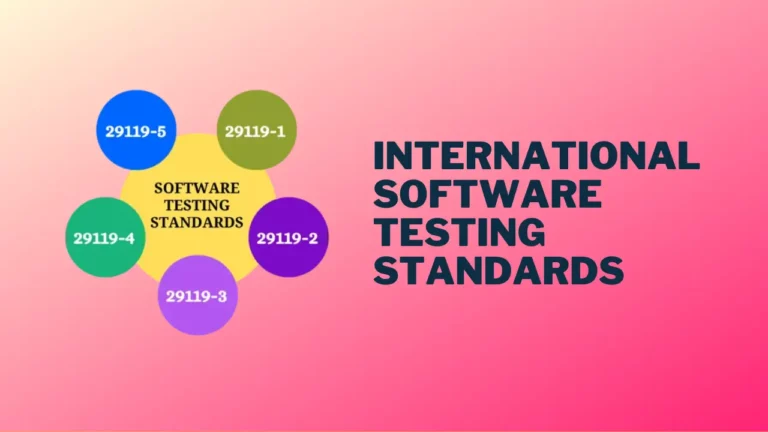Difference between Desktop, Client Server And Web Application Testing
In this post, we will see difference between Desktop, Client Server, & Web Application Testing. In general, software applications are being designed to function in different environments such as desktop, client-server, and web applications.

Before learning the difference between desktop, client-server and web application testing. I recommend you to learn Software Architecture: One-Tier, Two-Tier, Three Tier, N Tier
What is Desktop Application Testing
Desktop applications run stand alone in a desktop or laptop computer. So desktop testing is performed on desktop or laptop computer. While testing a desktop application, we have to focus on a specific environment. . Following testing types may be used to do desktop application testing.
- Usability Testing
- Functional Testing
- Performance Testing
- Backend Testing
Some examples of desktop applications are MS-Word, MS-Excel, Adobe Acrobat Reader, Corel Draw, Avast, etc.
What is Client-Server Application Testing
In a client server application, the application is loaded on the server and the application exe is loaded on the client machine. While testing client-server application, we have to focus on both client and server machine.
Following testing types may be used to do desktop application testing.
- GUI Testing
- Functional Testing
- Configuration testing
- Compatibility testing
- Interoperability testing
- Performance Testing
- Backend Testing
Some examples of client-server applications are FTP, E-mail, Web Browsers, Gateway, Microsoft.NET
What is Web Application Testing
Web applications run in a web browser, rather than being installed on a user’s device. Web applications run on any device that can access the internet which includes desktop computers, tablets, and mobile phones. Web applications are easily scalable, support multiple browsers and devices, platform independent and reduces the cost.
By doing web application testing, we can make sure that our web-based application is functioning properly and can be accepted by real-time end users. A web application should go through a series of validations to ensure the functionality, usability, accessibility, compatibility, performance, and security of the application.
Some examples of web applications are Gmail, Facebook, Twitter etc.,
Related posts:
- Software Architecture: One-Tier, Two-Tier, Three Tier, N Tier
- Why You Choose Software Testing As A Career – Interview Question
- Manual Testing Tutorial
- Manual Testing Interview Questions
- Bug Triage Process in Software Testing
- What is Shift Left Testing







